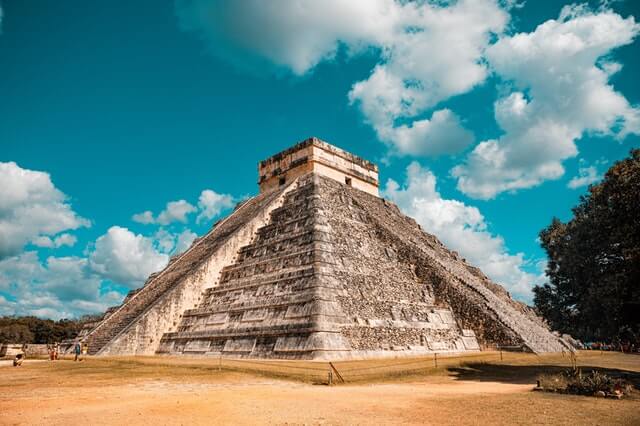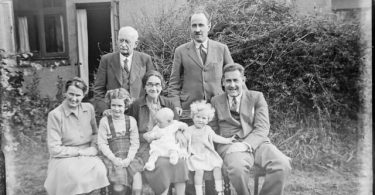Table of Contents
If you are trying to find your Mexican ancestors, you should understand the critical steps that will not disappoint the long and sometimes tiresome process. The best way to understand your family tree and ancestors’ history is through in-depth research into informative records about them. Luckily, Mexico has archived helpful information for centuries that provides links to trace your family. You can search available Mexican records to see whether you can find information about your ancestors’ name, place of birth, or death. The best way to find this crucial information is to converse with your relatives and analyze documents and clues you already have. But before we even highlight the resources you need, here are steps that you must follow for your process to be meaningful and fruitful.
Learn more about your Mexican ancestors with our Mexican Genealogy Service
Plan and Get Organized
Note that the first few days of your research process are likely to bear fruit as it involves gathering simple facts about relatives. However, it is important to identify and choose an online genealogist database that you think has information about Mexican families. Some of the available sites have created millions of family trees that can help you in your research. The subscribers create these family trees, so it would be a good idea to look for a database with most family trees and, of course, subscribers.
Search Genealogy Records at your Home.
Genealogy research involves a systematic process to collect data that solves mysteries and uncover your family histories. Therefore, you should know that you probably possess the most valuable information to help untie the knot. Start by focusing your hunt at your home and list available personal correspondence, documents, or photos that have links with your Mexican ancestors. If you think that your relatives might have some clues, involve them and let them identify available information that they may have.
Consult About Family History
Your older relatives could have important family histories that can save you much trouble throughout the process. Elders could also have a clearer understanding of some of the documents you may have and help you identify some people that appear in your recently discovered photos. Carry a digital recorder with you or note down important details to add up the genealogy research. Remember to ask important questions about your family, such as your parents’ full names or grandparents and location in Mexico.
Find an Online Solution.
With all the information you have gathered, you now know where to start your online genealogy research. Notable genealogy sites such as FamilySearch and FamilySearch wiki regularly add new options, services, and resources that you can use to trace your family tree. These online platforms have digitized their genealogy records that span for more than a century. Besides, each site has a family history library where you find catalogs to access the genealogy records through common free access to immigration records, ship pictures, publications, among other online materials.
Enhance Your Association
Advanced technology should be your right hand if you really mean to research your family history. This means socializing on your entire online platforms such as Facebook and Twitter. These platforms offer crucial links that connect you with people you likely share ancestry with. Use these platforms to look for public libraries, local organizations, genealogy-related services, tour guides, and archives in your ancestor’s home town. Note that even though the people you meet on these platforms may not be related to you, they can offer you substantial help. Don’t delete their email address before you advance your research.
Appreciate your findings
In your quest to research your family history, you should not expect to find significant details. Having this notion is important as you will not be disappointed by the insignificant information you may find about your Mexican ancestors. The best way to handle such a situation is to use the information you find to create an inspiring perception of your ancestry. Let the results of your family history show your version of circumstances, experiences, and life changes that shape who you are today.
Undergo DNA Testing
Testing your DNA with high-quality kits could provide family history answers that you would not have discovered just by following a paper trail. Platforms such as the FamilySearch wiki could provide leads depending on your DNA test results. Although this process is not primarily considered a genealogy research service, you are likely to discover your ancestors’ history and vital records. Note that the records may be dated thousands of years back, helping you learn about your branch on the family tree and ancestral root. Therefore, you should conduct your DNA search on web sites with tested people that offer free storage, online tutorials and support. Be ready for surprises here as DNA could reveal maternity and paternity secrets hidden by your immediate family members or ancestors.
Don’t Give Up
As long as you are ready to accept whatever you discover, explore the many places where your ancestors originated for informed field research. Note that the process is extensive, and the farther you search, the more ancestors you will discover. It is up to you to decide your limit, and even if you decide to limit your search to great grandparents, you will always have many ancestors to chase and other places to visit. Most importantly, ensure you follow the right path to achieve the ultimate pleasure and satisfaction that comes with finding your roots.
Crucial Resources to Determine Your Mexican Genealogy
While DNA is shown to help in your Mexican genealogy research, there are other crucial resources that you may need to identify your ancestor. It is important to understand what these resources are and how they can help you. Below are these records and the crucial information they provide.
Mexico Census Lists
The Mexican census records have been a critical reference for many people working to trace their family history and ancestry. For instance, records of the 1930 census have played a significant role in Mexican genealogy as it accounted for more than 90% of the population then. You can use the count and other census records depending on your family tree and the research bracket. The census information could help you find the names, age, birthplace, address, head of household and marital status of your relatives and ancestors in Mexico.
Mexico Marriage Records.
The Mexican authorities keep marriage records of people who formalized their companionship and issued certificates to confirm the marriage. At times the government also cooperated with the church to produce records of banns that showed the intention to conduct a church wedding. Some of these documents may be stored among other parish records making it easier to find them if you trace your ancestor’s church and parish. Other marriage records include a license, civil marriage certificate, wedding invitation, and church register record of marriage. Notably, the marriage records in Mexico have the name index of the concerned parties and the images of their marriage records arranged by state, volume and date.
Birth Records and Death Records
Like the birth records, the death record is also a crucial genealogy resource issued by the department of public health, and the information may vary. These records could help your Mexican research as they contain the birth date, full names, death information, and signature of a medical officer. The death records indicate the cemetery’s name where the deceased is to be buried.
Mexico Military Records
If your ancestors served in the military, they likely received payment or pension from the government. This means that you can find their pension application file in the archives. Note that the widow was also entitled to apply for the pension leaving crucial details such as children and birth dates, which you can use to trace your family history. The military records also involve the official military Personnel File that detail the activities of individual service members.
Immigration and Emigration Records
These records are commonly labeled as ship passenger records and provide crucial information in genealogy research about peoples’ profession, nationality, name and addresses of their relatives and place of the last residence. In case your ancestors immigrated, you may find their information on records at the archives. If they emigrated to other countries such as the United States you can as well search crucial leads on the country’s passenger lists.
Photographs
Most of the photographs are preserved in the photo archive to help future relatives and genealogists find their ancestors. The pictures come with labels that help identify ancestors by their surnames. Accessing the archives would help you acquire critical information as your ancestors could be captured among these genealogy photographs.
Mexico Directories and Members’ Lists
City directories are records of the city’s population that could help you locate your ancestors within a locality, state, or city. In most cases, the directory could be an index of a larger area’s census such as the Mexico city. It includes the ancestor’s address, making it easy for you to locate the nearest facility, such as your ancestor’s church and occupation.
Court Records
Courthouses have been preferable data sources for genealogists due to their rich information regarding adoption, naturalization, court proceedings, name changes, tax rolls, homestead files, and orphan records. Deeds are also processed in Mexican courts to indicate a transfer of lands and help trace an ancestor’s change of residence and property ownership. Probate records such as a will may show the process used to settle a person’s estate after their demise. Records associated with settling the estate might show the death date and other critical information regarding your ancestor.
Dictionaries
You may need to use dictionaries when searching for your Mexican ancestry to understand different abbreviations, initialism, and acronyms used in some of the ancient records you encounter in your genealogy research. Besides, having an online dictionary will help you find the common names in Mexico’s different languages, such as Spanish.
Use Mexican Maps
You will find ancient and modern maps preserved in the archives to show you the general mapping of your search area. Besides, you can find maps online such as Google maps with additional applications and high precision to aid in your genealogy research across Mexico. With a map, you can easily tell the transformation in your search area and locate ancient settlements.
Mexico History
Understanding Mexican history is one step of understanding the place where your ancestors lived. The museums are responsible for record collections and have information that provides a timeline link to photos and stories made through exhibits. By learning Mexican history, you understand the events, disasters that your ancestors endured. The digitization of history has made it easier to compile information about your ancestors’ life and death as the databases and record sets are searchable by surname.
Final Thought
Consulting a genealogist is one of the best ways to trace your Mexican family and ancestors. The experts understand the field pretty well and save you time and energy. However, having the right resources and understanding the entire process is the most crucial thing in tracing your family tree. The Mexican genealogy resources highlighted are important as they simplify their ancestry-search.




